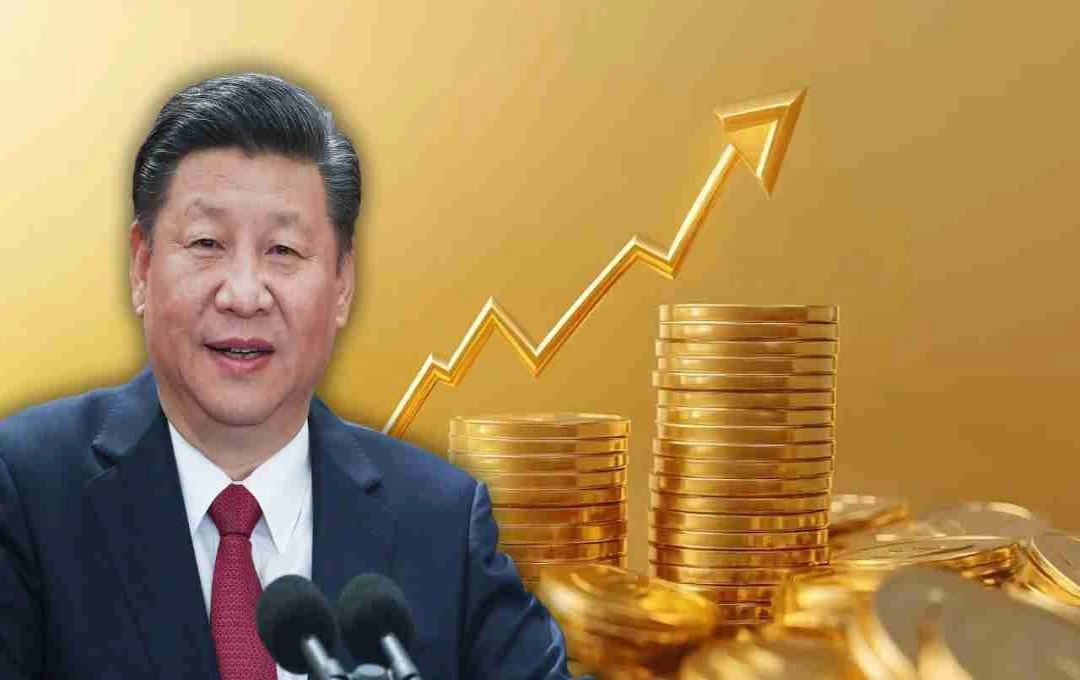A new SBI report states that gold is no longer merely jewelry but a crucial instrument of economic strength and strategic security. China has made it part of its national policy, and now India also needs to implement a long-term gold policy.
SBI Report: A new report by the State Bank of India (SBI) states that gold is no longer just a metal used in jewelry or a traditional investment option. Today, gold has become a vital component of a country's economic strength, foreign exchange reserves (Forex Reserves), and global strategy. According to the report, India now needs a long-term national gold policy that can robustly integrate gold into its economic and strategic planning.
China is a prime example of this. Over the past two decades, it has used gold as a means to enhance its economic identity and global influence. SBI suggests that India can now take concrete steps in this direction as well.
Historical Significance of Gold
In the 1930s, the world operated on a Gold Standard system. At that time, gold was the basis for determining the value of the dollar. In 1974, the United States decoupled the dollar from gold. Subsequently, gold emerged as an independent asset, used for market investment and as a safe-haven asset.
After the 2000s, China and India began increasing their gold reserves. In 2009, India purchased gold worth approximately $6.7 billion from the International Monetary Fund (IMF), strengthening its foreign reserves strategy. Since then, gold has evolved from being merely an emotional heritage to an instrument of economic security.
What Has Happened So Far on Gold Policy in India
After 1978, several government committees offered suggestions on gold-related regulations. Prominent among them were Dr. I.G. Patel, Dr. C. Rangarajan, and K.U.B. Rao. However, these reports generally advised people to invest their money in alternative investment instruments like banks, bonds, and funds, rather than hoarding gold.
In 2015, the Indian government launched three significant schemes to bring gold back into the economy:
- Gold Monetization Scheme (GMS)
- Sovereign Gold Bond (SGB)
- Indian Gold Coin
However, the new SBI report suggests that these efforts are not sufficient for India to achieve an influence comparable to China's in the global gold system. It is now time to establish an organized and permanent gold framework.
Lessons from China's Strategy
China did not just treat gold as a means of saving or investment; it integrated it into its economic and geopolitical strategy. It established large gold vaults, developed trading systems for buying and selling gold, and sought to reduce its dependence on the dollar through gold.

The SBI report indicates that India can also achieve this if it chooses to. India's global image, population, and economy are robust enough for it to further strengthen its international position through gold.
Balance of Gold Demand and Supply in India
In 2024, India's total gold demand was 802.8 tonnes, accounting for approximately 26% of the world's total demand. This means India is the world's second-largest gold consumer.
However, gold mining in India is very limited. Consequently, India has to import 86% of its total gold consumption.
From April to September in the fiscal year 2026, India imported gold worth approximately $26.5 billion. This was 9% less than the previous year. The report states that the potential discovery of new gold reserves in Odisha, Madhya Pradesh, and Andhra Pradesh is significant, as it could reduce import dependence in the future.
RBI's Gold Strategy
The Reserve Bank of India (RBI) now holds approximately 880 tonnes of gold. This accounts for about 15.2% of India's total foreign exchange reserves, an increase from just 9% a few years ago.
The RBI's current strategy is to store more gold in secure vaults within India. The objective is to safeguard the nation's gold from external risks in the event of any future global political or economic crisis.
Investors Return to Gold
Investment in Gold ETFs (Exchange Traded Funds) has increased rapidly. In the first six months of fiscal year 2026, investments grew 2.6 times. By September 2025, the total value of Gold ETFs reached ₹90,136 crore.
Furthermore, there is now a consideration to include gold as an investment option in pension funds. This indicates that gold is once again being regarded as a safe and reliable investment choice.
Government's Loss on Sovereign Gold Bonds
Between 2015 and 2024, the government issued 67 tranches of SGBs, with 125 tonnes of gold attributed to investors. Now, with gold prices at record highs, the government stands to incur losses of approximately ₹93,284 crore on these bonds.
This means that while rising gold prices are beneficial for investors, they are proving to be a loss-making proposition for the government.
Impact of Gold Prices on the Rupee
According to SBI Research, there is a b correlation of 0.73 between gold prices and the rupee (USD/INR). When gold prices rise, the rupee tends to weaken. The report estimates that if gold prices remain at $4000 per ounce, it could impact India's current account deficit by 0.3% of GDP. Nevertheless, SBI believes that the current account deficit will remain between 1% and 1.1% of GDP in FY26, which is a safe level.














